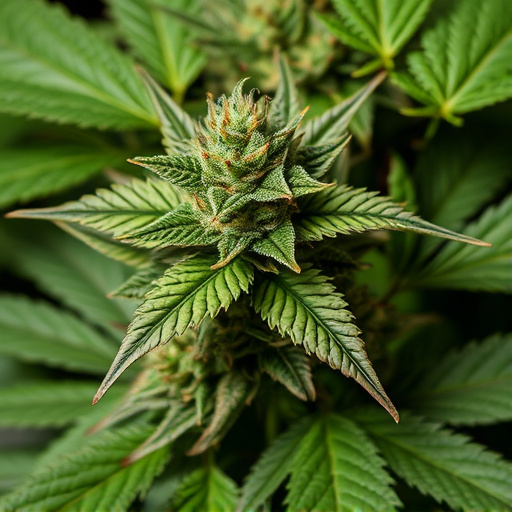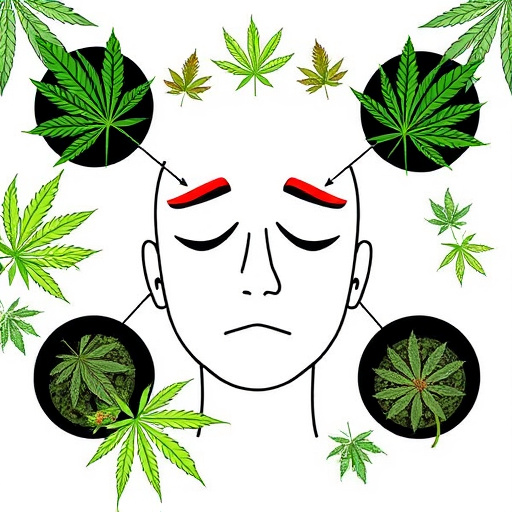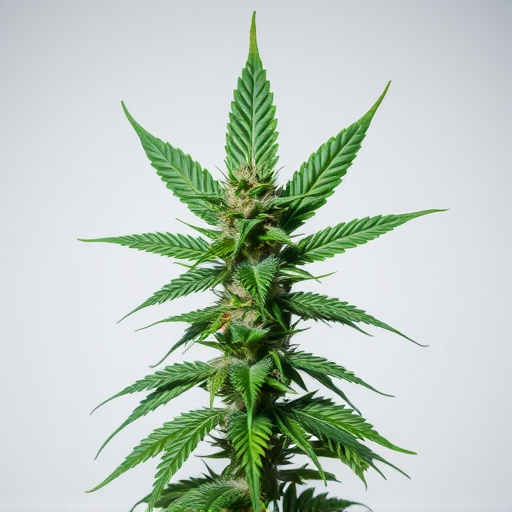Individual metabolism varies how quickly cannabis is processed and cleared from the body, impacting detection times. This diversity is crucial for medical users seeking cannabis strains for migraines, as it affects the effectiveness of compounds like CBD and dosage optimization. Factors like age, weight, gender, and health influence metabolic rates, leading to personalized dosing needs for effective migraine relief while considering cannabis strain efficacy.
“Unraveling the factors that influence cannabis detection times is essential, especially in understanding its effects on users’ experiences. This article delves into the intricate web of variables, from individual physiological differences to cannabis strain characteristics and consumption methods.
We explore how metabolism varies among individuals due to genetic predispositions, age, body weight, and gender, all of which play a role in determining when cannabis can be detected in the system. Additionally, we analyze how different cannabis strains, with their unique THC, CBD, and terpene profiles, impact detection durations. Furthermore, consumption methods—edibles versus smoking—and frequency are examined, offering valuable insights for those seeking relief from migraines or other conditions using cannabis.”
- Metabolism and Individual Variations
- – Genetic factors influencing metabolism
- – Age, body weight, and gender impact on detection times
Metabolism and Individual Variations

Everyone’s metabolism is unique, which means that how quickly someone metabolizes cannabis can vary greatly from person to person. This variation is influenced by a range of factors including age, weight, gender, and overall health. For instance, younger individuals tend to process cannabis faster than older adults due to differences in liver function.
When it comes to specific cannabis strains for migraines, some may have different effects based on individual metabolism. Certain strains with higher CBD levels are often sought after for their potential migraine-relieving properties, but the effectiveness can depend on how quickly and thoroughly the body absorbs and metabolizes these compounds. Understanding one’s unique metabolic profile could be key in determining optimal cannabis consumption times and dosages to manage conditions like migraines effectively.
– Genetic factors influencing metabolism

The metabolism of cannabis, particularly in relation to its detection times, is influenced by genetic factors unique to each individual. Genetic variations can significantly impact how quickly and effectively the body processes cannabinoids like THC (tetrahydrocannabinol), leading to varying effects and detection windows for users. For instance, certain gene variants may result in faster metabolism, causing THC to be cleared from the system more rapidly, which could reduce its detectability after consumption. Conversely, slower metabolic processing could extend the time THC remains detectable, especially in individuals seeking relief from conditions like migraines using cannabis strains known for their therapeutic effects.
These genetic factors play a crucial role in understanding why some people may pass drug tests shortly after consuming cannabis while others remain detectable longer. The variability highlights the importance of personalized medicine and tailored treatment approaches when utilizing cannabis or its derivatives, especially for medical purposes, such as managing migraine pain.
– Age, body weight, and gender impact on detection times

The impact of age, body weight, and gender on cannabis detection times is a critical aspect to consider when discussing the efficacy and duration of its effects, especially for medical users, including those seeking relief from migraines using cannabis strains. Research suggests that younger individuals may clear cannabis from their systems faster than older adults, leading to shorter detection windows. This is attributed to higher metabolism rates and differences in liver function across age groups.
Body weight plays a significant role as well. Heavier individuals tend to metabolize cannabis more slowly, resulting in longer detection times compared to those with lower body mass. Gender can also influence the absorption and elimination of cannabis compounds due to hormonal variations, which may further extend the time it takes for detectable levels to dissipate. These factors highlight the importance of personalized dosing and understanding one’s unique metabolism when using cannabis for medical purposes, such as managing migraine pain associated with specific cannabis strains.
Understanding the factors that influence cannabis detection times is essential for both users and medical professionals. When it comes to cannabis strains for migraines or other medicinal purposes, knowledge of individual variations in metabolism can help ensure optimal dosing and effectiveness. Genetic predispositions, age, body weight, and gender all play a role in how quickly and for how long cannabis remains detectable in an individual’s system. Recognizing these variables allows for more personalized approaches to cannabis use, maximizing its therapeutic benefits while considering potential implications.














